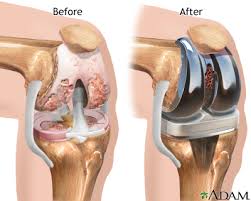
Navigating Knee Replacement Recovery: Insights from Boston Medical Center Expert
For anyone preparing for total knee replacement surgery, understanding the road to recovery is essential. Dr. Ayesha Abdeen, Chief of Hip and Knee Replacement Surgery at Boston Medical Center, offers valuable insights into what patients can expect after undergoing this common yet transformative procedure.
Total knee replacement (TKR) is typically performed under spinal anesthesia, often combined with a nerve block to ease postoperative pain.
According to Dr. Abdeen, most patients experience pain relief for up to 12 hours following the surgery thanks to the nerve block. Once the spinal anesthesia wears off—usually within the first hour in the recovery room—patients are encouraged to begin walking. This early movement is vital, as it helps accelerate recovery and reduces the risk of potentially dangerous blood clots that could travel to the lungs.
To further prevent blood clots, patients are prescribed medications such as aspirin or other anticoagulants depending on their risk profile. In the initial days after surgery, pain is typically most intense in the front and back of the knee. The pain behind the knee often stems from the removal of bone spurs caused by arthritis.
To manage this discomfort, a multimodal approach to pain relief is adopted, which includes a combination of acetaminophen, anti-inflammatory medications, and low-dose opioids. These medications usually begin before surgery and continue afterward, with opioids typically being discontinued within one to two weeks to avoid side effects like dizziness, constipation, and nausea. Most patients are admitted on the day of their surgery and discharged either the same day or the next. Physical therapy begins almost immediately and usually continues for six to twelve weeks.
Patients are allowed to bear full weight on the operated leg as soon as the anesthesia wears off, although the use of walkers or crutches is advised initially to support balance and prevent falls. Recovery involves more than just walking—it includes building strength, improving flexibility, and regaining balance. Strengthening the muscles around the knee, particularly the quadriceps and hamstrings, is essential.
Flexibility is equally important to avoid stiffness and the formation of scar tissue, which can hinder movement. Patients also work on improving their sense of balance and spatial awareness, which helps prevent falls, and participate in gait training to ensure proper walking form.
Returning to everyday activities depends largely on the patient’s pre-surgery activity level and the nature of their job. Those with desk jobs may return to work within two to four weeks, while individuals with more physically demanding roles might require up to twelve weeks.
Driving should be avoided until opioid medications are no longer needed and a surgeon gives the green light. Most patients can gradually return to low-impact sports such as walking, cycling, swimming, or golf within six to twelve weeks. High-impact activities like running and jumping are discouraged, as they can compromise the new joint and shorten the implant’s lifespan. Pain and swelling are normal during the first few weeks, but Dr. Abdeen cautions that certain symptoms warrant immediate medical attention.
Increasing pain or swelling in the calf or thigh, or signs of infection such as discharge or bleeding at the incision site, should prompt a call to the surgical team. Knee replacements typically last between 15 and 20 years, though this can vary. Premature failure can occur due to infection, loosening of the implant, bone fractures, or excessive stiffness. Despite these possibilities, most patients experience significant pain relief and improved mobility that greatly enhances their quality of life.